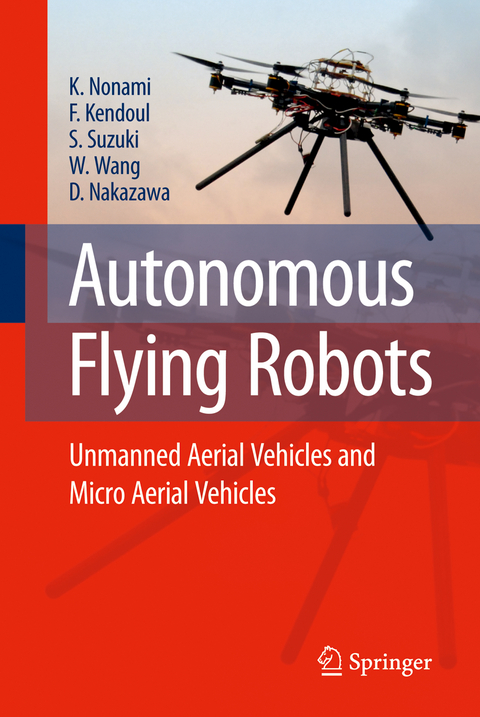
Autonomous Flying Robots
Springer Verlag, Japan
978-4-431-54687-0 (ISBN)
Modeling and Control of Small and Mini Rotorcraft UAVs.- Fundamental Modeling and Control of Small and Miniature Unmanned Helicopters.- Autonomous Control of a Mini Quadrotor Vehicle Using LQG Controllers.- Development of Autonomous Quad-Tilt-Wing (QTW) Unmanned Aerial Vehicle: Design, Modeling, and Control.- Linearization and Identification of Helicopter Model for Hierarchical Control Design.- Advanced Flight Control Systems for Rotorcraft UAVs and MAVs.- Analysis of the Autorotation Maneuver in Small-Scale Helicopters and Application for Emergency Landing.- Autonomous Acrobatic Flight Based on Feedforward Sequence Control for Small Unmanned Helicopter.- Mathematical Modeling and Nonlinear Control of VTOL Aerial Vehicles.- Formation Flight Control of Multiple Small Autonomous Helicopters Using Predictive Control.- Guidance and Navigation of Short-Range UAVs.- Guidance and Navigation Systems for Small Aerial Robots.- Design and Implementation of Low-Cost Attitude Quaternion Sensor.- Vision-Based Navigation and Visual Servoing of Mini Flying Machines.- Autonomous Indoor Flight and Precise Automated-Landing Using Infrared and Ultrasonic Sensors.
| Erscheint lt. Verlag | 16.11.2014 |
|---|---|
| Zusatzinfo | XVII, 329 p. |
| Verlagsort | Tokyo |
| Sprache | englisch |
| Maße | 155 x 235 mm |
| Themenwelt | Informatik ► Theorie / Studium ► Künstliche Intelligenz / Robotik |
| Informatik ► Weitere Themen ► Hardware | |
| Technik ► Elektrotechnik / Energietechnik | |
| ISBN-10 | 4-431-54687-1 / 4431546871 |
| ISBN-13 | 978-4-431-54687-0 / 9784431546870 |
| Zustand | Neuware |
| Haben Sie eine Frage zum Produkt? |
aus dem Bereich


